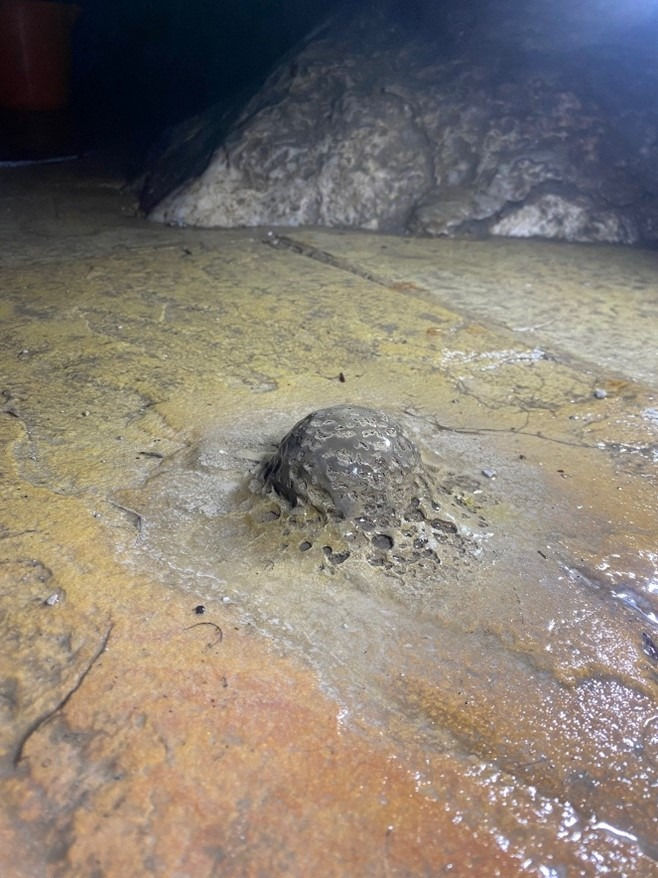Searching for muons in the British Cave Science Centre by Dr Matt Rowberry.
- Andi Smith

- Dec 22, 2023
- 3 min read
The Earth is under constant bombardment from innumerable cosmic rays that sweep through space at nearly the speed of light. Some are deflected by its magnetosphere whereas others pass into the atmosphere, where they undergo a series of reactions, creating a range of different subatomic particles. At the Earth’s surface, far the most common of these subatomic particles are muons; indeed, every minute, every square metre of our planet is struck by thousands of muons. In part due to their mass, despite having a mean lifetime of only 2.2 μs, these particles are capable of penetrating many hundreds of metres of rock, passing straight through caves as they descend farther into the crust. But can anyone build their own muon detector with little more than a basic knowledge of electronics and a handful of online tutorials? Matt Rowberry is a speleologist and data scientist at the Institute of Rock Structure & Mechanics, Czech Academy of Sciences, in Prague, who decided to tackle this question.

Here we see both muon detectors in test, the fact both lights are on shows that the detectors are being triggered simultaneously, indicative of a muon strike.
In 2017, one of the world’s most prestigious universities, MIT, teamed up with the National Centre for Nuclear Research in Poland to launch an outreach project called CosmicWatch, with the aim of encouraging undergraduate students to build their own portable muon detectors. We wanted to know, first, whether these detectors are actually as simple to build as they’re purported to be and, second, whether we could then use them to detect muons in caves. Each detector incorporates a slab of plastic scintillator – a luminescent material that absorbs the energy of incoming subatomic particles and then reemits some of this energy in the form of photons – instrumented with a silicon photomultiplier – a type of light sensing device. Photons incident on the photosensitive area of the silicon photomultiplier create a measurable current which can be amplified and shaped by a custom designed PCB. Information about each event is then recorded by a microcontroller. Crucially, to count muons, two detectors need to be built, with one acting as the master and one acting as its subordinate.
Having successfully built two detectors, next came a week of testing in the British Cave Science Centre. Four monitoring points were selected based, in part, on their proximity to mains electricity and, in part, on their depth below the ground surface – something that could be calculated accurately thanks to a LiDAR point cloud of the cave produced by the company Geoterra and a publicly available LiDAR digital terrain model produced by the Environment Agency. The detectors counted muons at each monitoring point for twenty four hours. We found that the total number of muons recorded at each monitoring point correlated strongly with depth below the surface: 2134 muons were detected at a depth of about 13 m in the Roman Chamber; 749 muons were detected at a depth of about 25 min the Main Chamber; 567 muons were detected at a depth of about 31 m near the base of the boulder choke; and 1879 muons were detected at a depth of about 15 m in the first chamber above the boulder choke.

The detectors in place in the first chamber above the boulder choke in Poole's Cavern
So are these muon detectors as easy to build as they’re purported to be? As long as you’ve got time and patience and some experience of electronics then, yes, building the detectors is challenging but feasible. However, it’s important to be aware of a few things. For example, due to the global chip shortage, some components may take months to be delivered and the total cost of the components will greatly exceed the CosmicWatch estimate of $100. Seemingly identical detectors can have disparate sensitivities and it can be challenging to establish communication between the main and subordinate detectors. The detectors consume very little power and this can be problematic when using a power bank, as most will turn off after a set period if not enough power is being drawn. None of these issues are insurmountable but they are frustrating. Could the detectors be used for cave research? It seems that muon counts could be used to approximate depth below the surface when other cave survey techniques cannot be applied. However, to do this, a more accurate muon depth gradient needs to be established. This could be the ideal topic for an undergraduate dissertation!



Comments